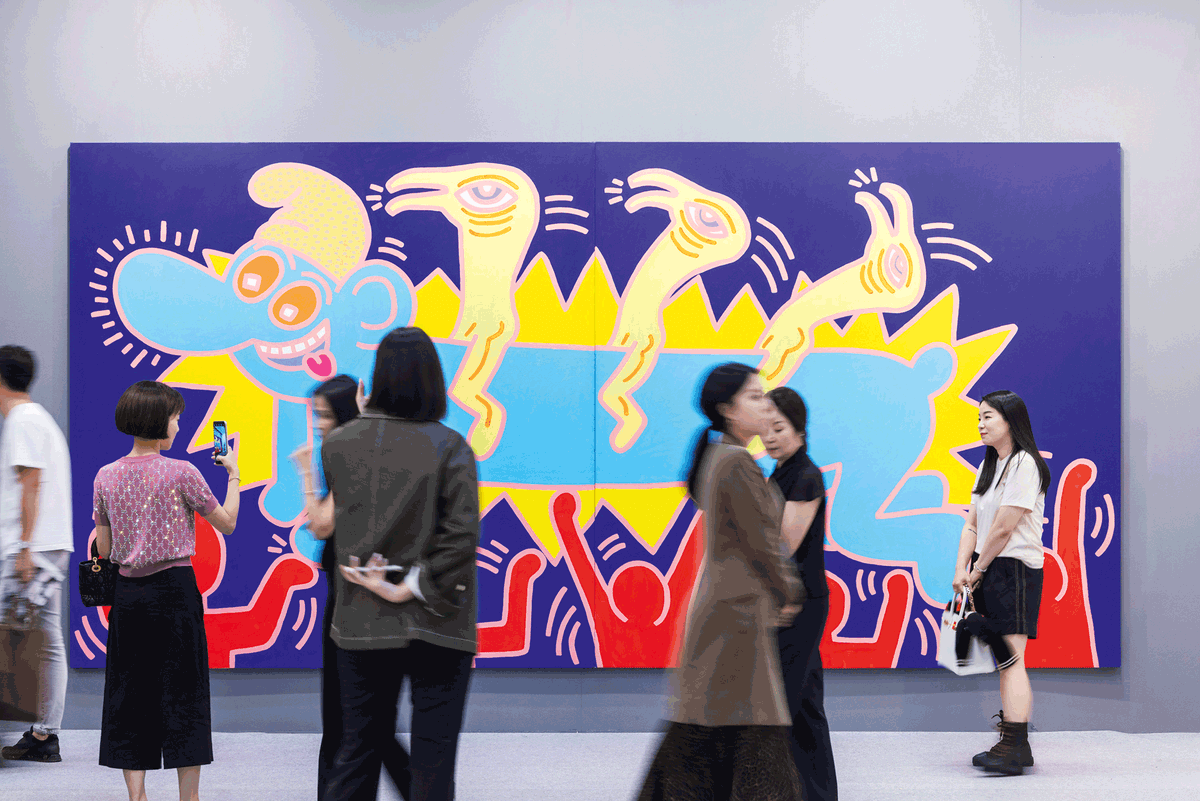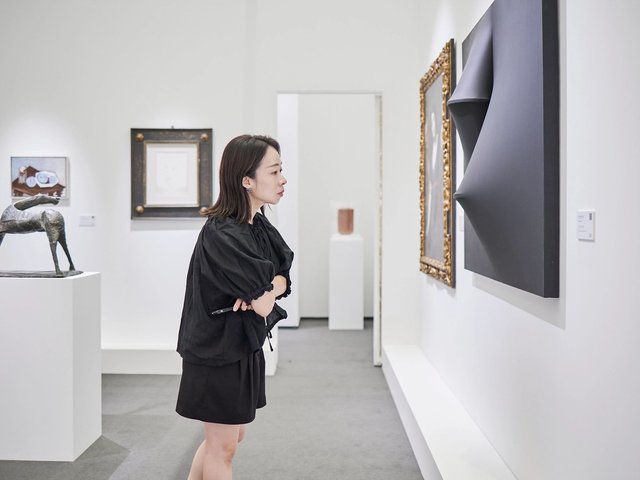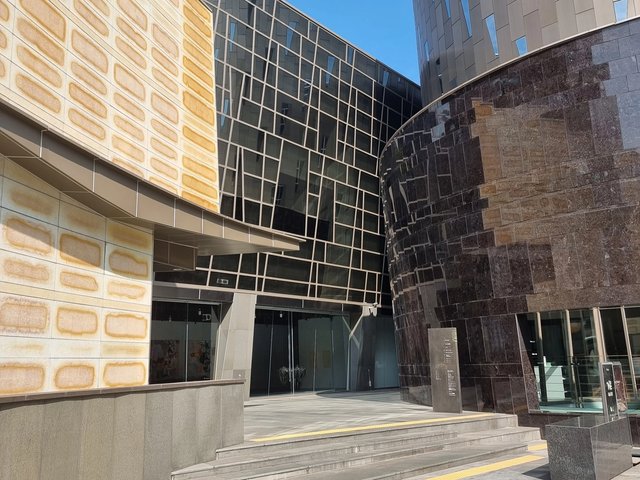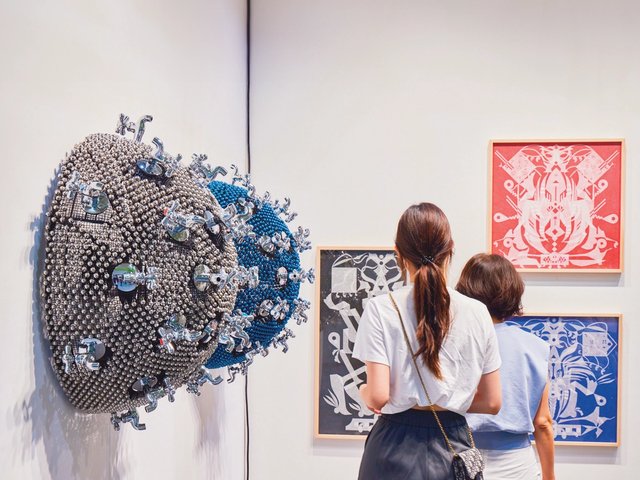The third Frieze Seoul is opening amid challenging economic and social times for South Korea. This year, the country has projected GDP growth of 2.5%, rallying after 1.7% last year, but President Yoon Suk Yeol, a conservative, faces accusations of corruption, with more than a million South Koreans signing a petition saying that he should be impeached.
“The Korean art market has been generally slow this year,” observes Jinsu So, a researcher, columnist and professor emeritus at Kangnam University. “After the launch of Frieze Seoul in 2022, the interest level in art surged and expectations rose based on purchases from overseas markets, with many new galleries opening in anticipation of continued expansion. However, it became difficult to secure collectors, first due to the pandemic and now the ensuing global economic downturn. While the participation rates at art fairs have grown, sales performance has not followed.”
Why Korea's art market is in a period of transition
Short-term profit-seeking art investments, which were popular in 2022, have declined, as have transactions of high-priced works at auction. As such, the art world is looking to the September season “hoping for positive news”, says So.
“The art market here tends to react sensitively to external factors,” making September an important bellwether, says Yumi Koh, head of business development, Korea, at White Cube. Present in Asia since 2012, the gallery opened a permanent Seoul space last September. “The initial surge of pop-up exhibitions by international galleries without a permanent presence in Korea, which happened in previous years, seems to be slowing down this time round.”
“Overall, the art market is transitioning from a phase of rapid growth to one of maturity,” says Eunice Jung, director of the Korea International Art Fair (KIAF). “Although there has been a slight contraction due to economic factors, the expanded accessibility and cultural impact of contemporary art continue to drive positive developments in the industry.”
The impact of international galleries
Jung says local enthusiasm about new international galleries entering Korea “remains strong”, with KIAF participants 333Gallery from Bangkok and Lazy Mike from Riga hoping to join the ranks of blue-chip galleries such as Pace, White Cube, Perrotin, Thaddaeus Ropac and Lehmann Maupin. “While the influx of international galleries and global art fairs has heightened competition, it has also driven growth and improvement among local galleries and artists,” says Jung, which, in turn, “has contributed positively to the development of the local art scene”.
However, her optimism is not universal. The curator Kim Inhye describes the incoming galleries as an “amazing phenomenon” but cautions, “There is no guarantee that this influx will continue. Clearly, Korean audiences’ interest in art, especially foreign art, is increasing, but it is questionable how deeply rooted it will prove. Koreans are very adaptable and eager to accept new things, but also easily dismiss them as ‘fads’.” Moreover, overseas newcomers will “have a significant impact on the local environment”. For Korean artists and galleries, “the reality is that it will be difficult to survive if you do not have an international market” and the inevitable increased competition “is a double-edged sword”.
“Overseas galleries are giving Korean galleries an external shock by showing off their competitiveness through levels of service and the power of promotion,” adds So. “They are competing in good faith and the competition for exclusive artists is expected to become more intense.”
For non-Korean galleries operating in the country, signing local artists to their roster almost as fast as they sign their leases demonstrates an embrace of Korean art. That representation, often split with a local gallery, can boost Korean artists with regular overseas exhibitions – which often run at the same time as Seoul Art Week. Perrotin New York is showing Lee Bae (6 September to 19 October) and Lehmann Maupin will exhibit Sung Neung Kyung in its New York location next month (17 October to 9 November).
“We frequently get asked whether White Cube is looking for Korean artists and the answer is both yes and no,” says Koh. The gallery is always seeking new talent, but does “not restrict artists based on their nationality”. Korean artist Lee Jin Woo has a show at White Cube Hong Kong (until 7 September) and the gallery worked extensively with Park Seo-Bo, who died last year, showing him in London and Hong Kong, with a New York show upcoming (8 November to 11 January).
Government funding and a 'collaborative art ecosystem'
According to KIAF director Jung, local institutions and the Ministry of Culture, Sports and Tourism are coordinating to “foster a collaborative art ecosystem… and create a comprehensive platform for contemporary art” all year round. Despite the economic slowdown the number of art fairs has notably increased, she says, with around 100 held nationwide, including this June’s inaugural 2024 Galleries Art Fair in Suwon. It was organised by KIAF’s parent entity the Galleries Association of Korea and is an offshoot of a fair they have held in Seoul since 1979. JaeMyung Noh, a young collector, launched the new fair Art OnO this April, while others are in the works.
Along with the substantial arts funding it provides, this summer the Korean government relaxed export restrictions on local art made after 1946 and began implementing the Art Promotion Act, which was passed last year. This year’s section standardises the registration of art transactions, creates a database of state collections and institutes an annual market survey and a five-year development plan. There will be a grace period that will last until 2027, after which artist resale royalties will be implemented.

“The art market here tends to react sensitively to external factors,” making September an important bellwether, says White Cube’s Yumi Koh. The gallery opened a permanent Seoul space last September
© White Cube (Hyun Jun Lee)
The Act broadly defines art as including all genres, plus performance and installation, says Hong Minjae, a deputy director at the culture ministry. The grace period for resale rights is “a period of preparation so the system can be stably established. During the moratorium, we plan to collect opinions from the field and experts to refine the system.” He adds that Korea has been discussing the practice since 2007, and as of this January 106 countries had similar policies in place, such as the Artist’s Resale Right.
Kim Nahyung, director of the emerging gallery ThisWeekendRoom, says implementation is key for the new law. “A well-crafted act can guide the field in a positive direction. However, considering the relatively short history of the Korean art market, I hope it will not remain an idealistic policy that exists only on paper.”
Jung says the law has generated “mixed reactions” from galleries, which fear it just rebrands an unpopular older art distribution law, whose restrictive registrations dampened the free market.
While galleries “generally support” artist royalties, its implementation gives them pause. “Given the current lack of transparency in art transactions and the relatively small size of the market, it is feared that only a few high-profile artists will benefit. Additionally, the requirement for disclosing transaction details might impose burdensome obligations,” Jung says. “While there is broad agreement on the importance of protecting artists’ rights, there are fears that the new regulations could exacerbate challenges in an already struggling market.”






